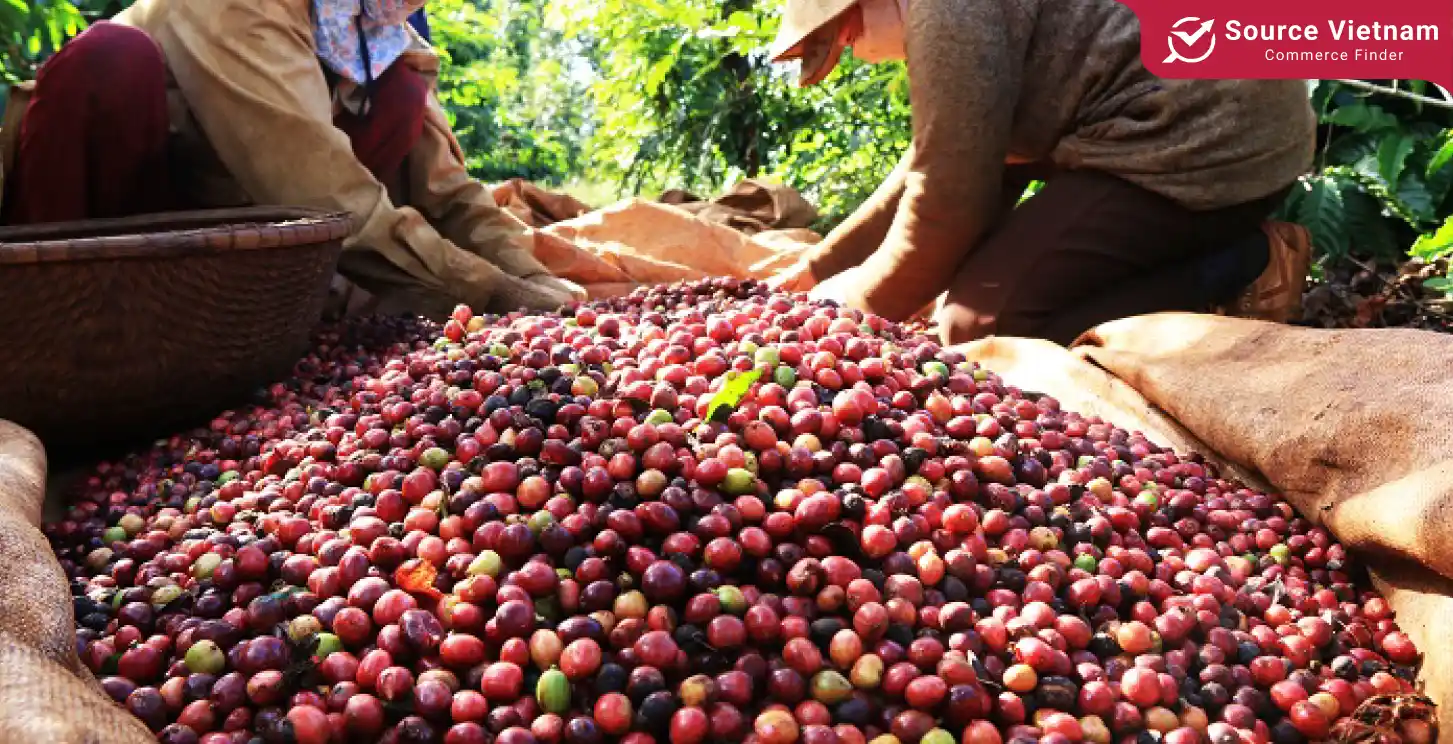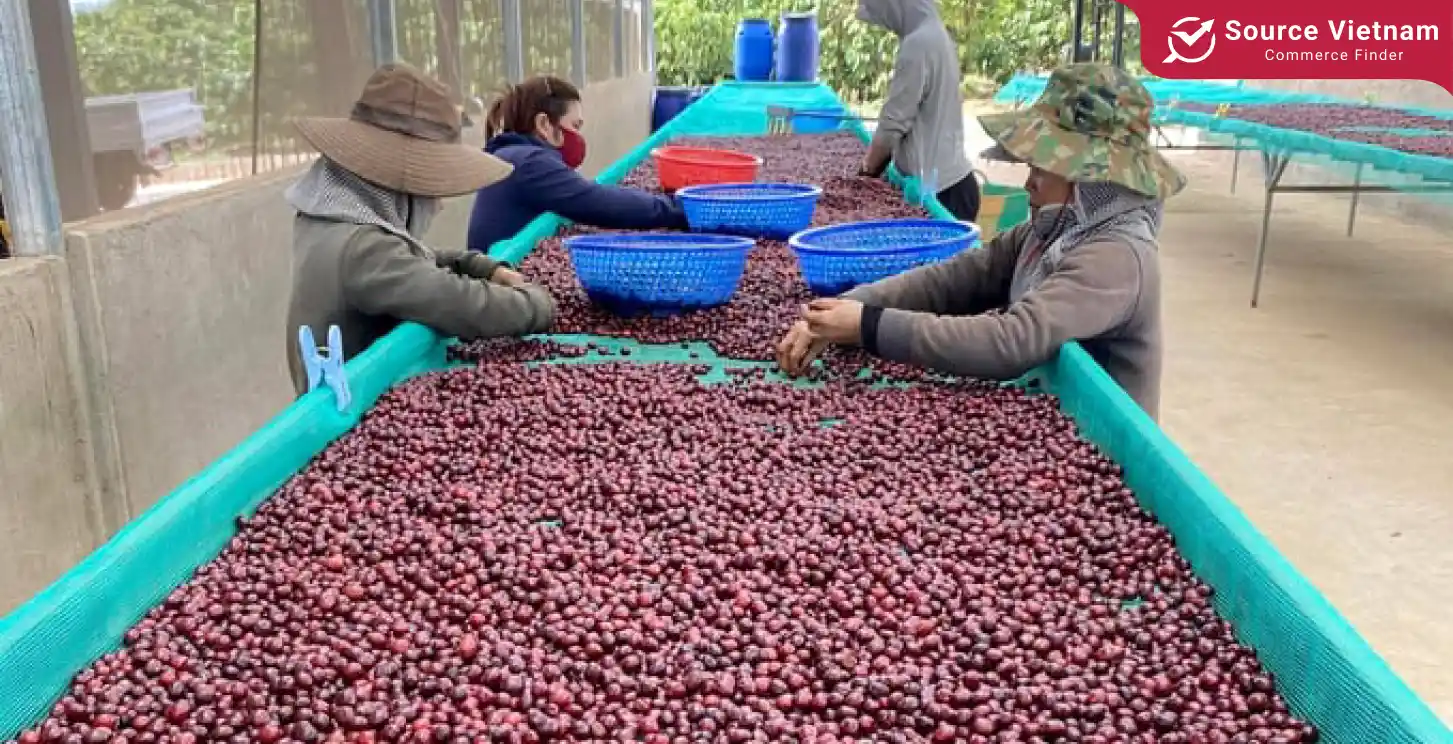In the first two months of 2025, Vietnam’s coffee industry achieved a remarkable milestone: export revenue soared to $1.72 billion, even though the actual volume of coffee exported dropped by 22% compared to the same period last year.

This paradox less coffee sold, but more money earned, is a result of rising global prices and increasing demand for Vietnamese coffee. Here’s a breakdown of what’s happening in the world of Vietnam’s coffee economy and what it might mean in the months ahead.
Export volume drops, prices surge
According to the General Department of Customs, Vietnam exported 309,505 tonnes of coffee in January and February 2025, a significant drop in volume from the previous year. But this decline was more than offset by a surge in coffee prices on the global market.
The average export price hit $5.562 per tonne, up nearly 76% year on year. This price spike was fueled by a global shortage in supply and strong demand from Europe and Asia. The result? An overall revenue increase of 37.2% despite fewer beans being shipped out.

Domestic prices hit record highs
Not only did Vietnam enjoy better prices abroad, but domestic coffee prices also reached record highs. In March, coffee prices in key growing regions like Central Highlands hit vnd 139.000 per kilogram (approximately $5.44), representing a 50% increase compared to the same period last year.
Traders and farmers alike are seeing the benefits, with many hoping this price level holds or even climbs higher in the second quarter of the year. Supply shortages across Latin America and Southeast Asia are expected to continue influencing global price trends.
Key markets continue to drive demand
Vietnam’s largest coffee buyers remain consistent. Germany, Italy, Belgium, the United States, and Japan are among the top markets, accounting for a significant portion of the country’s export volume. These countries not only favor Vietnam’s robusta beans but also increasingly seek sustainable and traceable coffee courses, an area where Vietnam is making strides.
A Look at the bigger picture
Coffee is Vietnam’s second-largest agricultural export after rice and has long been a pillar of its economy. The country is currently the world’s second-largest coffee exporter, just behind Brazil, and dominates the global robusta coffee market.
However, the challenges of climate change, aging coffee plants, and increasing production costs have prompted industry experts to call for more investment in sustainable farming and value-added production such as roasting and packaging domestically.

Expert insight: Why prices are rising
Nguyễn Đức Dũng, Deputy General Director of the Mercantile Exchange of Vietnam (MXV), shared that global coffee prices have surged due to tight inventories and climate-related disruptions in other producing countries.
“While lower supply has raised prices, it’s also a warning sign,” he noted. “Vietnam needs to improve quality, reduce dependency on raw exports, and move up the value chain.”

Pepper exports show a similar trend
Interestingly, the coffee trend is mirrored in another key Vietnamese export: pepper. In the same two-month period, Vietnam exported 27,274 tonnes of pepper, earning $184.4 million, a 50% increase in value, despite a drop in quantity.
This shows a broader pattern: global commodity prices are climbing, and Vietnam stands to gain, if it can manage resources wisely.
Outlook: Opportunities and challenges ahead
Looking ahead, the Vietnamese coffee industry has strong momentum but also faces pressure:
- Opportunities: High global demand, rising prices, and increasing interest in traceable, high-quality beans.
- Challenges: Aging plantations, limited replanting programs, rising input costs, and competition from emerging producers like Ethiopia and Colombia.
Industry insiders believe 2025 could be another record year for coffee if current price levels hold and weather conditions remain stable.
Conclusion
Vietnam’s coffee export performance in early 2025 tells a powerful story of resilience and opportunity. While export volume has declined, the surge in global prices and the country’s established position in the robusta market have translated into real gains.
If Vietnam continues to modernize its production practices, invest in sustainable farming, and focus on value-added products, it could not only maintain but expand its global coffee leadership in the years to come.
Want more stories like this? Explore trends and insights in Vietnam’s economy at SourceVietnam.com

















